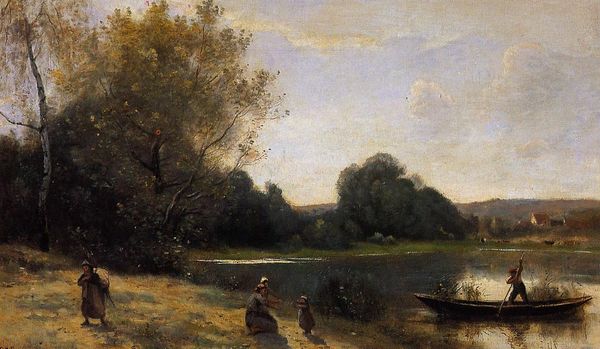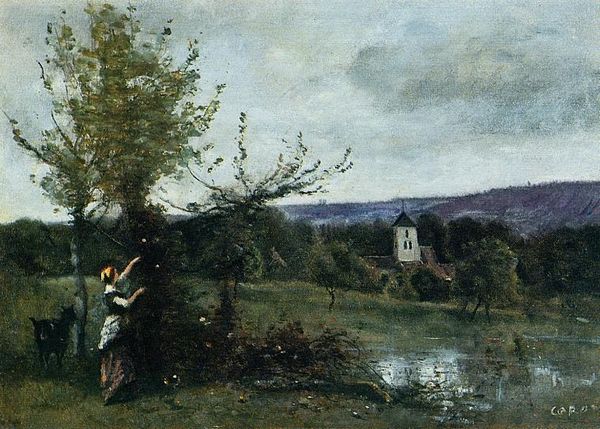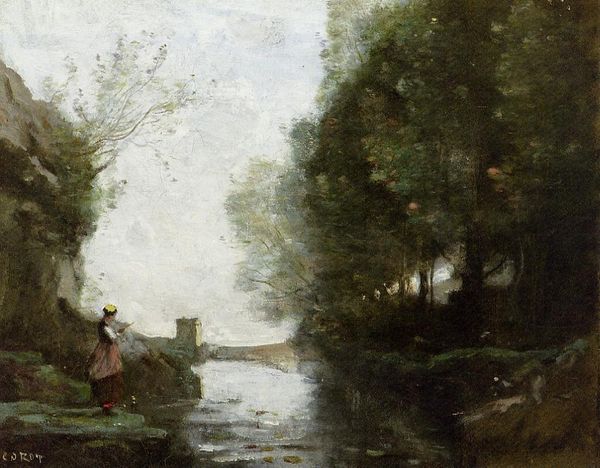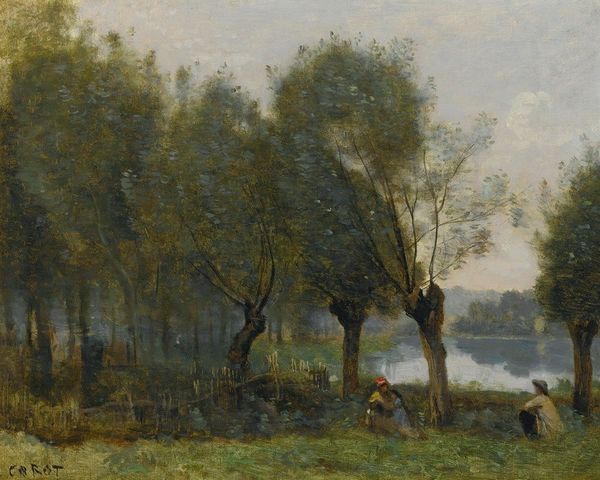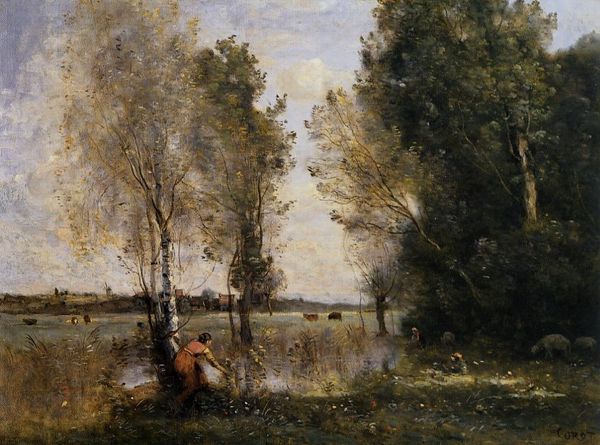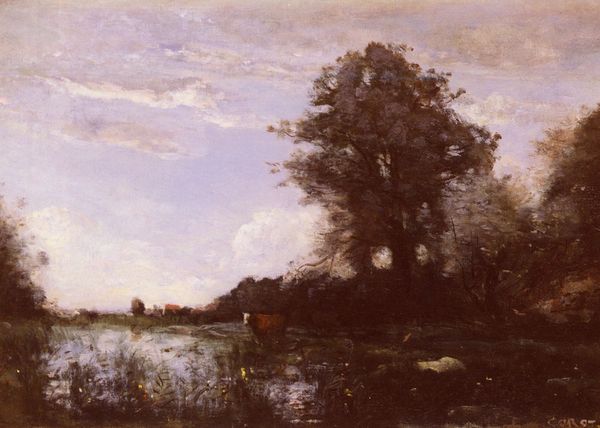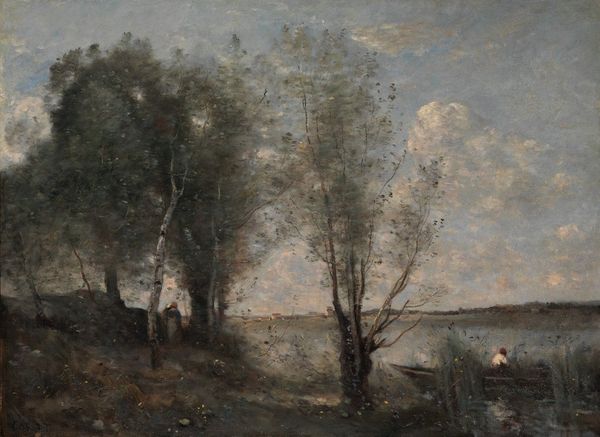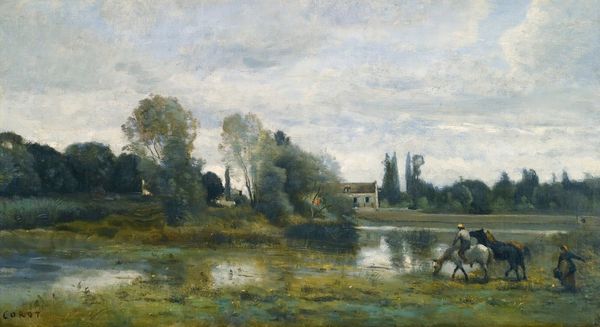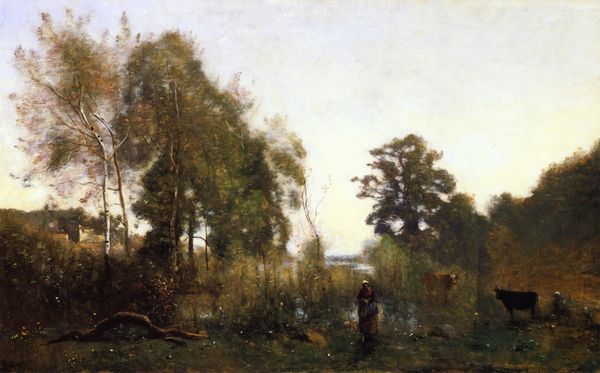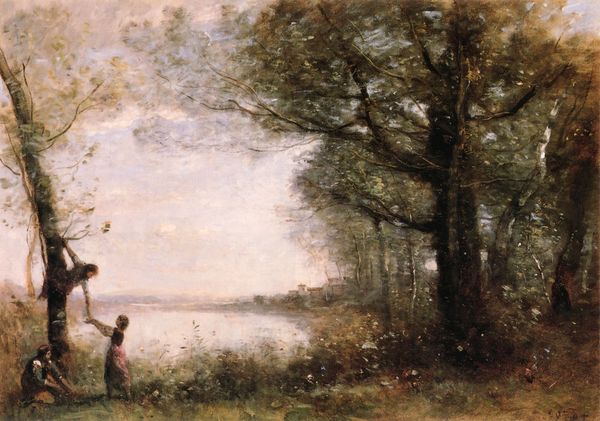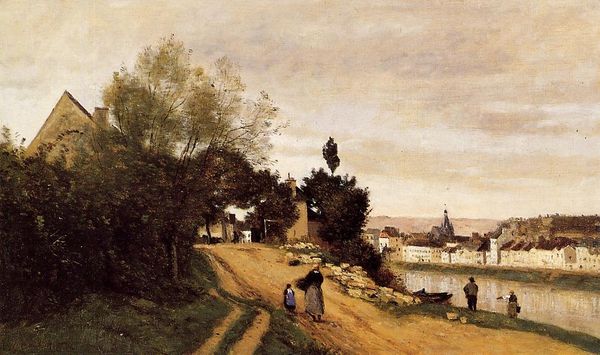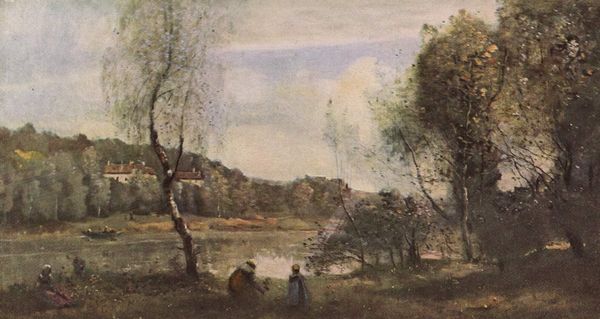
Copyright: Public domain
Curator: This is Jean-Baptiste-Camille Corot's "Cowherd and Her Child," painted circa 1870. It's currently held in a private collection. What are your initial thoughts? Editor: It feels quite somber. The color palette is restrained, almost monochromatic, creating a hushed, intimate atmosphere. I'm drawn to the subtle gradations of light on the water. Curator: Indeed. Corot, working "en plein air," was deeply interested in capturing transient effects of light and atmosphere. This seemingly simple scene of a woman, child, and cow belies a keen interest in the relationship between human labor and the landscape itself. Look at how the pastoral lifestyle is depicted: It reflects the economic realities and social structures of rural 19th-century France, even amidst its romantic presentation. Editor: You're right, but formally, note how the dark foliage in the foreground frames the brighter, more distant bank. The figures are relatively small, emphasizing the grandeur of the natural world. I also note how he balances soft edges with deliberate detailing—a real testament to formal training tempered by intuition. Curator: He skillfully integrates observation with his academic training, bridging realism with a certain idealized vision. I see in that cowherd labor as not merely a necessity, but one element in an entire cycle of agricultural work and local trading relationships of that era, showing the interactions between labor and its effect on the very matter that he renders visible to the eye. Editor: And how interesting, that Corot’s approach allowed for capturing the luminosity, rather than focusing primarily on line or contour. He dissolves the forms just enough to catch at a sensation, blurring at what can or cannot be touched, it all serves the painting as an object as itself. Curator: Studying Corot through the prism of material practices gives one new ways to reconsider notions such as pure "landscape"—they are as embedded in the history of production and access as are paintings of laborers! Editor: It becomes a compelling meditation on structure. I'm walking away seeing a sophisticated interplay of light, form, and atmosphere with all materials playing perfectly. Curator: I come away reflecting on not only what we see in the landscape but what went into representing such, prompting reflection upon unseen aspects of human and ecological relationships, as it did the very materiality with which Corot rendered his landscape so immediate to us.
Comments
No comments
Be the first to comment and join the conversation on the ultimate creative platform.
